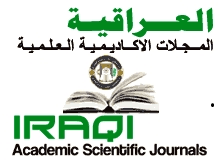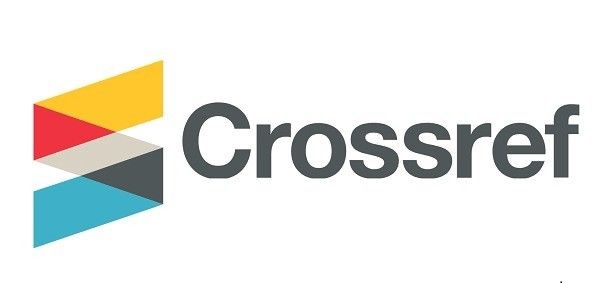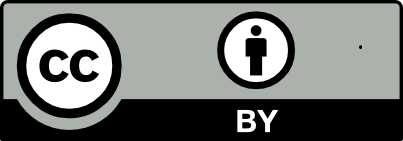Investigation of DNA Protective, Anti-bacterial, and Antidiabetic Effects of Cucurbitacin E from Citrullus colocynthis L. Iraqi plant with invitro Toxicity Study
Keywords:
Cucurbitacin E, Antibacterial, Antidiabetic, DNA Damage Protection, Human Erythrocyte HeamolysisAbstract
Botanical remedies have long been used for medical purposes, and their use has grown alongside human civilization. Citrullus colocynthis plant is a member of the Cucurbitaceae family contain many secondary metabolites once of them is cucurbitacin E. Studies have revealed the significance of cucurbitacin E because of its diverse therapeutic properties like antibacterial and biological activity against bacterial combined , study antidiabetic activity and investigate the DNA protection effect of cucurbitacin E with study its effect on human erythrocyte of these plant and its metabolite (cucurbitacin E) to demonstrate its activity in this study. Extraction for Citrullus colocynthis fruits by hot continuous method using chloroform as solvent was done then detection of cucurbitacin E was used by High-performance liquid chromatography (HPLC), well diffusion method for antibacterial, glucose reuptake method for antidiabetic activity, Agarose gel electrophoresis was subsequently employed to evaluate the range of DNA damage also invitro study of the hemolytic activity assay. After successful extraction the results show the valuable antibacterial activity of cucurbitacin E detect by using bacterial isolates, and minimum inhibitory concentration of cucurbitacin E values for bacterial isolate were (0.1, 0.25, and 0.15) mg/ml for (Staphylococcus aureus, Klebsiella pneumoniae and Bacillus subtilis) respectively. Regarding antidiabetic effect was studying by glucose reuptake invitro assay in which metformin was used as stander and the results were the inhibition values found for cucurbitacin E, extract, and metformin were( 0.108, 0.313, and 0.377mg/ml), respectively and after successful extraction the DNA damage protection assay determined the optimal concentrations (1,0.5,and0.25) mg/ml give protection %87.52, 72.21, and44.92respectivlyand cause heamolysis for red blood cell in dose dependent manner
Downloads
References
M. Kapoor et al., “Citrullus colocynthis an Important Plant in Indian Traditional System of Medicine,” Pharmacogn Rev, vol. 14, no. 27, pp. 22–27, 2021, DOI: https://doi.org/10.5530/phrev.2020.14.4.
M. Kapoor et al., “Citrullus colocynthis an Important Plant in Indian Traditional System of Medicine,” Pharmacogn Rev, vol. 14, no. 27, pp. 22–27, 2021, DOI: https://doi.org/10.5530/phrev.2020.14.4.
N. H. Seong, “Traditional Chinese medicine,” Singapore’s Health Care System: What 50 Years Have Achieved, vol. 4, no. 2, pp. 351–361, 2015, DOI: https://doi.org/10.1142/s0219030304001922.
S. T. S. Hassan, K. Berchová-Bímová, J. Petráš, and K. T. S. Hassan, “Cucurbitacin B interacts synergistically with antibiotics against Staphylococcus aureus clinical isolates and exhibits antiviral activity against HSV-1,” South African Journal of Botany, vol. 108, pp. 90–94, 2017, DOI: https://doi.org/10.1016/j.sajb.2016.10.001.
E. E. Delgado-Tiburcio et al., “Pharmacokinetics and Biological Activity of Cucurbitacins,” Pharmaceuticals, vol. 15, no. 11, 2022, DOI: https://doi.org/10.3390/ph15111325.
A. Ponsankar et al., “Toxicity and developmental effect of cucurbitacin E from Citrullus colocynthis L. (Cucurbitales: Cucurbitaceae) against Spodoptera litura Fab. and a non-target earthworm Eisenia fetida Savigny,” Environmental Science and Pollution Research, vol. 27, no. 19, pp. 23390–23401, Jul. 2020, DOI: https://doi.org/10.1007/s11356-019-04438-1
H. A. Sindhu, M. Afzal, and I. Shahid, “Pharmacological Activities and In-Silico Studies of Bioactive Compounds Identified in Organic Fractions of the Methanolic Extract of Citrullus Colocynthis,” Dose-Response, vol. 21, no. 3, pp. 1–15, 2023, DOI: https://doi.org/10.1177/15593258231187357.
A. Bharadwaj, A. Rastogi, S. Pandey, S. Gupta, and J. S. Sohal, “Multidrug-Resistant Bacteria: Their Mechanism of Action and Prophylaxis,” Biomed Res Int, vol. 2022, 2022, DOI: https://doi.org/10.1155/2022/5419874.
G. M. Alasadi and Z. Al-obaidi, “Antibacterial activity of new ciprofloxacin conjugates,” vol. 24, no. 4, pp. 361–367, 2024.
S. T. S. Hassan, K. Berchová-bímová, J. Petrá, and K. T. S. Hassan, “South African Journal of Botany Cucurbitacin B interacts synergistically with antibiotics against Staphylococcus aureus clinical isolates and exhibits antiviral activity against HSV-1,” vol. 108, pp. 90–94, 2017, DOI: https://doi.org/https://doi.org/10.1016/j.sajb.2016.10.001.
S. E. Hernández Navia, J. L. Figueroa-Hernández, J. S. Rodríguez-Zavala, M. Rodriguez-Sosa, and M. Martínez-Vázquez, “Anti-Diabetic Effects of Cucurbitacins from Ibervillea lindheimeri on Induced Mouse Diabetes,” J Chem, vol. 2022, 2022, DOI:https://doi.org/10.1155/2022/3379557.
S. P, “Anti-Diabetic Potential of Therapeutic Medicinal Plants: A Review,” Palestinian Medical and Pharmaceutical Journal, vol. 9, no. 3, 2024, DOI: https://doi.org/10.59049/2790-0231.1199.
S. E. Hernández Navia, J. L. Figueroa-Hernández, J. S. Rodríguez-Zavala, M. Rodriguez-Sosa, and M. Martínez-Vázquez, “Anti-Diabetic Effects of Cucurbitacins from Ibervillea lindheimeri on Induced Mouse Diabetes,” J Chem, vol. 2022, 2022, DOI: https://doi.org/10.1155/2022/3379557.
G. S. Banu, “Cucurbitacin Augments Insulin Sensitivity and Glucose Uptake Through Translocation and Activation of Glut4 in Pi3K/Akt Signaling Pathway,” World J Pharm Res, vol. 6, no. 8, pp. 1078–1096, 2017, DOI: https://doi.org/10.20959/wjpr20178-8924.
T. P. Smina, D. K. Maurya, T. P. A. Devasagayam, and K. K. Janardhanan, “Protection of radiation induced DNA and membrane damages by total triterpenes isolated from Ganoderma lucidum (Fr.) P. Karst,” Chem Biol Interact, vol. 233, pp. 1–7, 2015, DOI: https://doi.org/10.1016/j.cbi.2015.03.019.
S. Ramachandran and N. R. Prasad, “Effect of ursolic acid, a triterpenoid antioxidant, on ultraviolet-B radiation-induced cytotoxicity, lipid peroxidation and DNA damage in human lymphocytes,” Chem Biol Interact, vol. 176, no. 2–3, pp. 99–107, 2008, DOI: https://doi.org/10.1016/j.cbi.2008.08.010.
J. Chanda, S. Biswas, A. Kar, and P. K. Mukherjee, “Determination of cucurbitacin E in some selected herbs of ayurvedic importance through RP-HPLC,” J Ayurveda Integr Med, vol. 11, no. 3, pp. 287–293, Jul. 2020, DOI: https://doi.org/10.1016/j.jaim.2019.01.002.
U. Kaushik, V. Aeri, and S. R. Mir, “Cucurbitacins - An insight into medicinal leads from nature,” Jan. 01, 2015, Medknow Publications. DOI: https://doi.org/10.4103/0973-7847.156314.
C. Varela et al., “Cucurbitacins as potential anticancer agents: new insights on molecular mechanisms,” J Transl Med, vol. 20, no. 1, pp. 1–16, 2022, DOI: https://doi.org/10.1186/s12967-022-03828-3.
M. Khan, M. Khan, K. Al-hamoud, S. F. Adil, M. R. Shaik, and H. Z. Alkhathlan, “Diversity of Citrullus colocynthis (L.) Schrad Seeds Extracts: Detailed Chemical Profiling and Evaluation of Their Medicinal Properties,” Plants, vol. 12, no. 3, Feb. 2023, DOI: https://doi.org/10.3390/plants12030567.
J. Chanda, S. Biswas, A. Kar, and P. K. Mukherjee, “Determination of cucurbitacin E in some selected herbs of ayurvedic importance through RP-HPLC,” J Ayurveda Integr Med, vol. 11, no. 3, pp. 287–293, Jul. 2020, DOI: https://doi.org/10.1016/j.jaim.2019.01.002.
M. Balouiri, M. Sadiki, and S. K. Ibnsouda, “Methods for in vitro evaluating antimicrobial activity: A review,” J Pharm Anal, vol. 6, no. 2, pp. 71–79, 2016, DOI: https://doi.org/10.1016/j.jpha.2015.11.005.
S. Weksler-Zangen, T. Mizrahi, I. Raz, and N. Mirsky, “Glucose tolerance factor extracted from yeast: Oral insulin-mimetic and insulin-potentiating agent: In vivo and in vitro studies,” British Journal of Nutrition, vol. 108, no. 5, pp. 875–882, 2012, DOI: https://doi.org/10.1017/S0007114511006167.
C. J. Ononamadu et al., “In vitro and in vivo anti-diabetic and anti-oxidant activities of methanolic leaf extracts of Ocimum canum,” Caspian J Intern Med, vol. 10, no. 2, pp. 162–175, 2019, DOI: https://doi.org/10.22088/cjim.10.2.162.
R. A. Abdul-Jabar, S. A. M. Al-Fadal, and B. J. Hameed, “The antioxidant and DNA damage protection activity of Hibiscus sabdariffa L.,” Plant Cell Biotechnol Mol Biol, vol. 21, no. 65–66, pp. 10–23, 2020.
P. Y. Lee, J. Costumbrado, C. Y. Hsu, and Y. H. Kim, “Agarose gel electrophoresis for the separation of DNA fragments,” Journal of Visualized Experiments, no. 62, pp. 1–5, 2012, DOI: https://doi.org/10.3791/3923.
J. Laloy et al., “Impact of Silver Nanoparticles on Haemolysis, Platelet Function and Coagulation,” Nanobiomedicine (Rij), vol. 1, pp. 1–9, 2014, DOI: https://doi.org/10.5772/59346.
A. Veiga et al., “Colorimetric microdilution assay: Validation of a standard method for determination of MIC, IC50%, and IC90% of antimicrobial compounds,” J Microbiol Methods, vol. 162, no. May, pp. 50–61, 2019, DOI: https://doi.org/10.1016/j.mimet.2019.05.003.
M. Bourhia et al., “Antibacterial Potentials of Chemically Characterized Extract of Citrullus colocynthis L . Seeds,” 2021.
N. Vaou, E. Stavropoulou, C. Voidarou, C. Tsigalou, and E. Bezirtzoglou, “Towards advances in medicinal plant antimicrobial activity: A review study on challenges and future perspectives,” Microorganisms, vol. 9, no. 10, pp. 1–28, 2021, DOI: https://doi.org/10.3390/microorganisms9102041.
N. Wrońska, M. Szlaur, K. Zawadzka, and K. Lisowska, “The Synergistic Effect of Triterpenoids and Flavonoids— New Approaches for Treating Bacterial Infections?,” Molecules, vol. 27, no. 3, 2022, DOI: https://doi.org/10.3390/molecules27030847.
U. S. Jijith and J. S, “Recent Advances and Methods for in-Vitro Evaluation of Antidiaetic Activity: a Review,” Int J Res Ayurveda Pharm, vol. 8, no. 1, pp. 81–87, 2017, DOI: https://doi.org/10.7897/2277-4343.08117.
M. Sikander et al., “Cucurbitacin D reprograms glucose metabolic network in prostate cancer,” Cancers (Basel), vol. 11, no. 3, pp. 1–17, 2019, DOI: https://doi.org/10.3390/cancers11030364.
S. P. Panda, A. K. Sarangi, and U. P. Panigrahy, “Isolation of Cucurbitacin-B From Cucumis Callosus and Its Hypoglycemic Effect in Isolated Rat Enterocytes,” Int J Pharm Pharm Sci, vol. 10, no. 5, p. 123, 2018, DOI: https://doi.org/10.22159/ijpps.2018v10i5.25788.
S. Garg, C. Kaul, and R. Wadhwa, “Anti-Stress and Glial Differentiation Effects of a Novel Combination of Cucurbitacin B and Withanone ( CucWi-N ): Experimental Evidence,” vol. 8565, pp. 201–209, 2018, DOI: https://doi.org/10.1159/000490693.
B. Zieniuk and M. Pawełkowicz, “Recent Advances in the Application of Cucurbitacins as Anticancer Agents,” Metabolites, vol. 13, no. 10, 2023, DOI: https://doi.org/10.3390/metabo13101081
G. F. G. Silvestre et al., “Anti-tumor and anti-inflammatory activity in vivo of apodanthera congestiflora cogn. (cucurbitaceae),” Pharmaceutics, vol. 13, no. 5, 2021, DOI: https://doi.org/10.3390/pharmaceutics13050743.
Downloads
Published
Issue
Section
License
Copyright (c) 2025 Basrah Researches Sciences

This work is licensed under a Creative Commons Attribution 4.0 International License.







